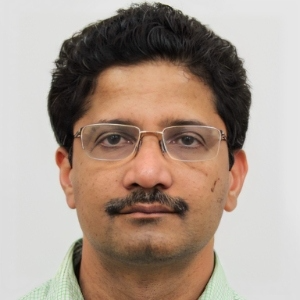Title : Peripheral denervation interventions for expansion of intact sensory-motor territories in proximal neuraxial lesion cases – hypotheses and literature review
Abstract:
Background: Following complete peripheral nerve injury, insensate area shrinks due to territory expansion of the surrounding nerves, through collateral sprouting. This kind of take-over of insensate territories is not observed in proximal lesions such as stroke & complete spinal cord injuries or in pre-ganglionic injuries such as complete Cauda equina syndrome or pre-ganglionic brachial plexus injuries. In these cases, the continuity of the sensory nerve from the cell body of the first-order sensory neurone in the dorsal root ganglion till the end organs in the skin & mucosae is preserved. Therefore, it is hypothesised that in proximal neuraxial lesions, the preserved distal continuity of the first-order sensory neurone opposes any attempt at territory take-over by the adjacent nerves; by sectioning the peripheral nerve distal to the dorsal root ganglion, thus disconnecting the first-order sensory neurone cell body from the sensory end organs, territory take-over by adjacent intact nerves with sensate territories is facilitated through collateral sprouting, thus facilitating expansion of sensate skin territories. Similar motor system interventions in paralysed territories may be feasible in selected cases; these will include lower motor neurone lesioning & fasciectomies, to expand the voluntary motor control territories of the adjacent nerves, through collateral sprouting.
Primary Objective: To determine whether such hypotheses have been postulated previously and applications consequent to these hypotheses have been conceived and tested.
Secondary Objective: To examine the peripheral nerve injury literature for any corroborative evidence suggesting the viability of these hypotheses.
Literature Review: Literature search was conducted on Medline & Embase databases, looking for a combination three categories of terms – those relating to proximal neuraxial lesions, those concerned with peripheral nerve or muscle interventions and those referring to nerve regeneration or collateral sprouting. The yield from this search was then studied further through abstract screening, with an intention to perform full-text review with cross-reference checking on the final selection.
Results: This search yielded 861 results, reducing to 835 after removing the duplicates. 749 of these articles had English language abstracts and were selected for the next stage. On abstract screening, none of these were suitable for full-text review, as they were unrelated to the postulated hypotheses. Further unstructured searches of peripheral nerve injury literature yielded publications (varying degree of relevance), related to sensory or motor recovery through collateral sprouting, following peripheral nerve lesions; a few pertinent ones are cited in the article.
Conclusion: The hypotheses postulated and the consequent applications to facilitate reduction of neurological deficits, have not been previously described However, there are observations & clues in both animal & human literature on peripheral nerve lesions that indicate that these hypotheses are based on sound rationale and the interventions based on these are likely to succeed. Therefore, these are worth investigating further, with a view to reduce deficits & disability in cases of proximal neuraxial lesions with sensory-motor deficits.
Keywords :
nerve regeneration; dorsal root ganglion; stroke; spinal cord injuries; cauda equina syndrome.




